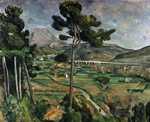Pre-reading Discussion
1) Who do you believe is a Post-Impressionism artist and why do you think he/she should be in this category?
2) What do you believe is the difference between Impressionism and Post-Impressionism?
| 1
Postimpressionism is
an art-historical term coined (1910) by British
art critic Roger Fry to describe the various styles of painting that flourished
in France during the period from about 1880 to about 1910. Generally, the
term is used as a convenient chronological
umbrella covering
the generation of artists who sought new forms of expression in
the wake of the pictorial revolution
wrought
by impressionism. Among the principal figures in this group were Pierre
Bonnard, Paul C 2 Although
their individual styles differed
profoundly,
all of these artists moved away from the aesthetic
program of impressionism and, in particular, from the impressionists' emphasis
on depicting a narrow spectrum
of visual reality. It would be a mistake to view the postimpressionists
as simply rejecting their impressionist heritage;
rather, they accepted the revolutionary impact
of impressionism and went on to explore new
aesthetic ideas, many of which grew out of concepts implicit
in impressionism. Another connecting link between most of the postimpressionists
with the notable exception of C 3 C 4 The
art of Gauguin and van Gogh, however, reflected a more emotional bias
and involved highly charged colors and a rhythmical
patterning of lines across the surface of a picture. Like C 5 The Fauves and expressionists also owed a large debt to such neoimpressionists as Seurat, whose use of "points" or dots of pure color and whose banishment of conventional modeling added to the mounting interest at the end of the 19th century in unrealistic color and flat patterns (see neoimpressionism). Finally, the other-worldliness of the postimpressionist symbolists (see symbolism, art), such as Redon, together with the distorted lines of Art Nouveau in the works of Toulouse-Lautrec and other contemporaries, fostered a growing tendency toward abstract art that was to prove essential to nonfigurative developments in painting after 1910. 6 Although in the strict sense it cannot be called a movement, the postimpressionist period did provide a vital and creative link between the impressionist revolution and the founding of all the subsequent major art movements of the 20th century. After reading discussion 1) In your
own words, what are the characteristics of Post-Impressionism? Why are
these characteristics important? |

|
| Source:
"Postimpressionism," Grolier Multimedia Encyclopedia. Grolier, Inc., 2001. <http://gme.grolier.com/cgi-bin/gme_bp?assetid=0234060-0> (May 20, 2001). |